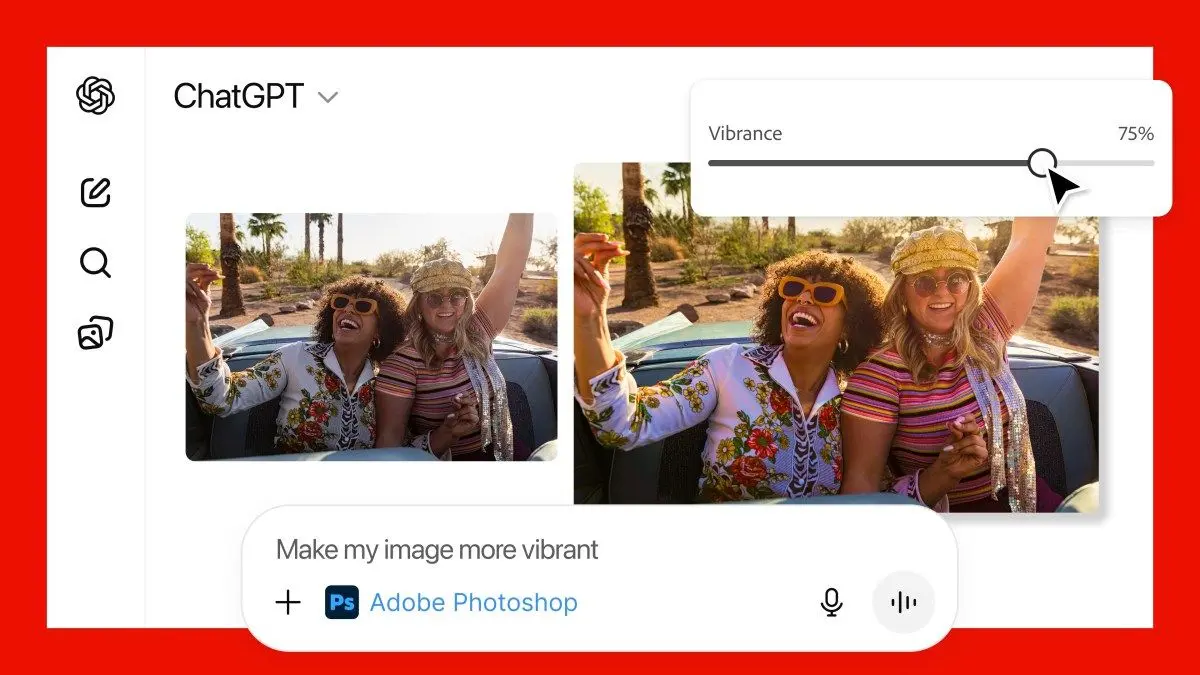Writer Launches AI Agent Platform to Automate Enterprise Workflows Beyond Simple Chatbots
2 Sources
2 Sources
[1]
Writer's AI agents can actually do your work -- not just chat about it
Writer, a San Francisco-based artificial intelligence startup, is launching a unified AI agent platform designed to let any employee automate complex business workflows without writing code -- a capability the company says distinguishes it from consumer-oriented tools like Microsoft Copilot and ChatGPT. The platform, called Writer Agent, combines chat-based assistance with autonomous task execution in a single interface. Starting Tuesday, enterprise customers can use natural language to instruct the AI to create presentations, analyze financial data, generate marketing campaigns, or coordinate across multiple business systems like Salesforce, Slack, and Google Workspace -- then save those workflows as reusable "Playbooks" that run automatically on schedules. The announcement comes as enterprises struggle to move AI initiatives beyond pilot programs into production at scale. Writer CEO May Habib has been outspoken about this challenge, recently revealing that 42% of Fortune 500 executives surveyed by her company said AI is "tearing their company apart" due to coordination failures between departments. "We're delivering an agent interface that is both incredibly powerful and radically simple to transform individual productivity into organizational impact," Habib said in a statement. "Writer Agent is the difference between a single sales rep asking a chatbot to write an outreach email and an enterprise ensuring that 1,000 reps are all sending on-brand, compliant, and contextually-aware messages to target accounts." How Writer is putting workflow automation in the hands of non-technical workers The platform's core innovation centers on making workflow automation accessible to non-technical employees -- what Writer executives call "democratizing who gets to be a builder." In an exclusive interview with VentureBeat, Doris Jwo, Writer's director of product management, demonstrated how the system works: A user types a request in plain English -- for example, "Create a two-page partnership proposal between [Company A] and [Company B], make it a branded deck, include impact metrics and partnership tiers." The AI agent then breaks down that request into discrete steps, conducts web research, generates graphics and charts on the fly, creates individual slides with sourced information, and assembles a complete presentation. The entire process, which might take an employee hours or days, can be completed in 10-12 minutes. "The agent basically looks at the request, breaks it down, does research, understands what pieces it needs, creates a detailed plan at a step-by-step level," Jwo explained during a product demonstration. "It might say, 'I need to do web research,' or 'This user needs information from Gong or Slack,' and it reaches out to those connectors, grabs the data, and executes the plan." Crucially, users can save these multi-step processes as Playbooks -- reusable templates that colleagues can deploy with a single click. Routines allow those Playbooks to run automatically at scheduled intervals, essentially putting knowledge work "on autopilot." Security and compliance controls: Writer's answer to enterprise IT concerns Writer positions these enterprise-focused controls as a key differentiator from competitors. While Microsoft, OpenAI, and Anthropic offer powerful AI capabilities, Writer's executives argue those tools weren't designed from the ground up for the security, compliance, and governance requirements of large regulated organizations. "All of the products you mentioned are great products, but even Copilot is very much focused on personal productivity -- summarizing email, for example, which is important, but that's not the component we're focusing on," said Matan-Paul Shetrit, Writer's director of product management, in an exclusive interview with VentureBeat. Shetrit emphasized Writer's "trust, security, and interoperability" approach. IT administrators can granularly control what the AI can access -- for instance, preventing market research agents from mentioning competitors, or restricting which employees can use web search capabilities. All activity is logged with detailed audit trails showing exactly what data the agent touched and what actions it took. "These fine-grained controls are what make products enterprise-ready," Shetrit said. "We can deploy to tens of thousands or hundreds of thousands of employees while maintaining the security and guardrails you need for that scale." This architecture reflects Writer's origin story. Unlike OpenAI or Anthropic, which started as research labs and later added enterprise offerings, Writer has targeted Fortune 500 companies since its 2020 founding. "We're not a research lab that went to consumer and is dabbling in enterprise," Shetrit said. "We are first and foremost targeting the Global 2000 and Fortune 500, and our research is in service of these customers' needs." Inside Writer's strategy to connect AI agents across enterprise software systems A critical technical component is Writer's approach to system integrations. The platform includes pre-built connectors to more than a dozen enterprise applications -- Google Workspace, Microsoft 365, Snowflake, Asana, Slack, Gong, HubSpot, Atlassian, Databricks, PitchBook, and FactSet -- allowing the AI to retrieve information and take actions across those systems. Writer built these connectors using the Model Context Protocol (MCP), an emerging standard for AI system integrations, but added what Shetrit described as an "enterprise-ready" layer on top. "We took a first-principle approach of: You have this MCP connector infrastructure -- how do you build it in a way that's enterprise-ready?" Shetrit explained. "What we have today in the industry is definitely not it." The system can write and execute code on the fly to handle unexpected scenarios. If a user uploads an unfamiliar file format, for instance, the agent will generate code to extract and process the text without requiring a human to intervene. Jwo demonstrated this capability with a daily workflow she runs: Every morning at 10 a.m., a Routine automatically summarizes her Google Calendar meetings, identifies external participants, finds their LinkedIn profiles, and sends the summary to her via Slack -- all without her involvement. "This was pretty simple, but you can imagine for a salesperson it might say, 'At the end of the day, wrap up a summary of all the calls I had, send me action items, post it to the account-specific Slack channel, and tag these folks so they can accomplish those workflows,'" Jwo said. "That can run continuously each day, each week, or on demand." From mortgage lenders to CPG brands: Real-world AI agent use cases across industries The platform is attracting customers across multiple industries. New American Funding, a mortgage lender, uses Writer Agent to automate marketing workflows. Senior Content Marketing Manager Karen Rodriguez uploads Asana project tickets with creative briefs, and the AI executes tasks like updating email campaigns or transforming articles into social media carousels, video scripts, and captions. Other use cases span financial services teams creating investment dashboards with PitchBook and FactSet data, consumer packaged goods companies brainstorming new product lines based on social media trends, and marketing teams generating partnership presentations with branded assets. Writer has added customers including TikTok, Comcast, Keurig Dr Pepper, CAA, and Aptitude Health, joining an existing base that includes Accenture, Qualcomm, Uber, Vanguard, and Marriott. The company now serves more than 300 enterprises and has secured over $50 million in signed contracts, with projections to double that to $100 million this year. The startup's net retention rate -- a measure of how much existing customers expand their usage -- stands at 160%, meaning customers on average increase their spending by 60% after initial contracts. Twenty customers who started with $200,000-$300,000 contracts now spend about $1 million annually, according to company data. 'Vibe working': Writer's vision for AI-powered productivity beyond coding Writer executives frame the platform as enabling what they call "vibe working" -- a playful reference to the popular term "vibe coding," which describes AI tools like Cursor that dramatically accelerate software development. "We used to call it transformation when we took 12 steps and made them nine. That's optimizing the world as it is," Habib said at Writer's AI Leaders Forum earlier this month, according to Forbes. "We can now create a new world. That is the greenfield mindset." Shetrit echoed this framing: "Vibe coding is the theme of 2025. Our view is that 'vibe working' is the theme of 2026. How do you bring the same productivity gains you've seen with coding agents into the workspace in a way that non-technical users can maximize them?" The platform is powered by Palmyra X5, Writer's proprietary large language model featuring a one-million-token context window -- among the largest commercially available. Writer trained the model for approximately $700,000, a fraction of the estimated $100 million OpenAI spent on GPT-4, by using synthetic data and techniques that halt training when returns diminish. The model can process one million tokens in about 22 seconds and costs 60 cents per million input tokens and $6 per million output tokens -- significantly cheaper than comparable offerings, according to company specifications. Making AI Decisions Visible: Writer's Approach to Trust and Transparency A distinctive aspect of Writer's approach is transparency into the AI's decision-making process. The interface displays the agent's step-by-step reasoning, showing which data sources it accessed, what code it generated, and how it arrived at outputs. "There's a very clear exhibition of how the agent is thinking, what it's doing, what it's touching," Shetrit said. "This is important for the end user to trust it, but also important for the IT person or security professional to see what's going on." This "supervision" model goes beyond simple observability of API calls to encompass what Shetrit described as "a superset of observability" -- giving organizations the ability to not just monitor but control AI behavior through policies and permissions. Session logs capture all agent activity when enabled by administrators, and users can submit feedback on every output to help improve system performance. The platform also emphasizes providing sources and citations for generated content, allowing users to verify information. "With any sort of chat assistant, agentic or not, trust but verify is really important," Jwo said. "That's part of the pillars of us building this and making it enterprise-grade." What Writer Agent Costs -- and Why It's Included in the Base Platform Writer is including all the new capabilities -- Playbooks, Routines, Connectors, and Personality customization -- as part of its core platform without additional charges, according to Jwo. "This is fully included as part of the Writer platform," she said. "We're not charging additional for using Writer Agent." The "Personality" feature allows individual users, teams, or entire organizations to customize the AI's communication style, ensuring generated content matches brand voice and tone guidelines. This works alongside company-level controls that enforce terminology and style requirements. For highly structured, repetitive tasks, Writer also offers a library of more than 100 pre-built agents and an AI Studio for building custom multi-agent systems aligned with specific business use cases. The Race to Define Enterprise AI: Can Purpose-Built Platforms Beat Tech Giants? The launch crystallizes a fundamental tension in how enterprises will adopt AI at scale. While consumer-facing AI tools emphasize individual productivity gains, companies need systems that work reliably across thousands of employees, integrate with existing software infrastructure, maintain regulatory compliance, and deliver measurable business impact. Writer's wager is that these requirements demand purpose-built enterprise platforms rather than consumer tools adapted for business use. The company's $1.9 billion valuation -- achieved in a November 2024 funding round that raised $200 million -- suggests investors see merit in this thesis. Backers include Premji Invest, Radical Ventures, ICONIQ Growth, Salesforce Ventures, and Adobe Ventures. Yet the competitive landscape remains formidable. Microsoft and Google command enormous distribution advantages through their existing enterprise software relationships. OpenAI and Anthropic possess research capabilities that have produced breakthrough models. Whether Writer can maintain its differentiation as these giants expand their enterprise offerings will test the startup's core premise: that serving Fortune 500 companies from day one creates advantages that research labs turned enterprise vendors cannot easily replicate. "We're entering an era where if you can describe a better way to work, you can build it," Jwo said. "The new Writer Agent democratizes who gets to be a builder, empowering the operational experts and creative problem-solvers in every department to become the architects of their own transformation. That's how you unlock innovation that competitors can't replicate." The promise is alluring -- AI capabilities powerful enough to transform how work gets done, accessible enough for any employee to use, and controlled enough for enterprises to deploy safely at scale. Whether Writer can deliver on that promise at the speed and scale required will determine if its vision of "vibe working" becomes the 2026 theme Shetrit predicts, or just another ambitious attempt to solve enterprise AI's execution problem. But one thing is certain: In a market where 85% of AI initiatives fail to escape pilot purgatory, Writer is betting that the winners won't be the companies with the most powerful models -- they'll be the ones that make those models actually work inside the enterprise.
[2]
Writer upgrades agentic AI capabilities with new AI agent for enterprise work - SiliconANGLE
Writer upgrades agentic AI capabilities with new AI agent for enterprise work Generative artificial intelligence startup Writer Inc. launched a major expansion to its platform today with the debut of Writer Agent, a system that adds advanced capabilities and customizable autonomous automation for enterprise work. The new Writer Agent rolls out new agent playbooks, routines, connectors and personality customization. It extends on the company's previous Action Agent and the company's chatbot to create a unified agent experience with an intuitive interface. "Writer Agent is the difference between a single sales rep asking a chatbot to write an outreach email and an enterprise ensuring that 1,000 reps are all sending on-brand, compliant and contextually-aware messages to target accounts," said Writer co-founder and Chief Executive May Habib. The new interface offers two modes in one, offering a chatbot experience for asking quick questions and an agentic experience that generates data-driven presentations including documents, spreadsheets, presentations, dashboards and more. Under the hood, the Agent is powered by Writer's proprietary large language model Palmyra X5. The X5 model is a reasoning model that features a 1 million-token context window, allowing it to ingest and reason across extremely large volumes of enterprise data at once. Playbooks function as templates that convert frequently used workflows into repeatable, shareable artifacts. Once saved, a playbook can be accessed directly from the Writer Agent chat window. Use cases range from generating search engine optimized content to analyzing advertising performance. A playbook can also allow teams to create instant-use skills for their agents. Routines schedule playbooks to run automatically at specific times or intervals, allowing users to "set it and forget it." Writer Agent can also connect to numerous third-party systems using the company's Model Context Protocol gateway. Built-in connectors tie into enterprise applications and services such as Google Workspace, Microsoft 365, Snowflake Inc., HubSpot Inc. and Databricks Inc. Users and teams can now also easily adjust their Agent's voice profile per session or for every activity. Setting a personality ensures a consistent voice across all documents the agent produces, from emails to reports, meaning that it will generate using a distinctive tone, voice and style. This new capability is in addition to the existing ability to enforce global brand style and terminology. New administrative controls provide information technology teams with granular oversight of core functionalities, including web use, browser automation, data access and connector permissions. These tools are intended to support visibility across security and compliance requirements. "We're entering an era where if you can describe a better way to work, you can build it," said Director of Product Management Doris Jwo. "The new Writer Agent democratizes who gets to be a builder, empowering the operational experts and creative problem-solvers in every department to become the architects of their own transformation." Writer's update arrives as the broader industry accelerates toward agentic orchestration across enterprise workflows. Major platforms are pushing in the same direction, each with its own interpretation of what an AI "agent" should be. Microsoft Corp. has expanded Copilot into an orchestration layer for Office, security tools and business applications. Google LLC has begun rolling out Gemini-driven agents for Workspace, providing automated task handling and data extraction. OpenAI Group PBC's GPTs and Anthropic PBC's improvements with Claude models and Workflows have also emerged as flexible frameworks for assembling tool-using, multistep automations. These approaches reflect a convergence in the enterprise AI landscape. Companies are no longer focused solely on chatbot interfaces. Instead, they're moving toward systems that can operate across documents, applications and data sources to execute complex, multistep tasks. This release comes as Writer continues to gain industry adoption and new enterprise-focused customers, including Aptitude Health Holdings LLC, Comcast Corp., Keurig-Dr. Pepper Inc., New American Funding, LLC and TikTok Inc. They joined alongside Writer's long-time customers, who include Accenture plc, Qualcomm Inc. and Uber Technologies Inc. "Writer Agent isn't just another AI tool, it's the monumental leap we've been promised," said New American Funding Senior Content Marketing Manager Karen Rodriguez. "It's the shift from AI that tells you how to do something to AI that does it for you."
Share
Share
Copy Link
Writer, a San Francisco AI startup, has launched Writer Agent, a unified platform that enables employees to automate complex business workflows using natural language instructions, moving beyond traditional chatbot functionality to autonomous task execution.
Writer Launches Unified AI Agent Platform for Enterprise Automation
Writer, a San Francisco-based artificial intelligence startup, has unveiled Writer Agent, a comprehensive platform designed to move enterprise AI beyond simple chatbot interactions into autonomous workflow automation. The platform enables any employee to automate complex business processes using natural language instructions, without requiring coding expertise
1
.
Source: SiliconANGLE
The Writer Agent platform combines conversational AI with autonomous task execution in a unified interface. Starting this week, enterprise customers can instruct the AI to create presentations, analyze financial data, generate marketing campaigns, or coordinate across multiple business systems including Salesforce, Slack, and Google Workspace. These workflows can then be saved as reusable "Playbooks" that run automatically on schedules
1
.Addressing Enterprise AI Implementation Challenges
The launch comes as enterprises struggle to scale AI initiatives beyond pilot programs. Writer CEO May Habib has highlighted this challenge, citing company research showing that 42% of Fortune 500 executives report AI is "tearing their company apart" due to coordination failures between departments
1
."Writer Agent is the difference between a single sales rep asking a chatbot to write an outreach email and an enterprise ensuring that 1,000 reps are all sending on-brand, compliant, and contextually-aware messages to target accounts," Habib stated
2
.Democratizing Workflow Automation for Non-Technical Users
The platform's core innovation centers on making workflow automation accessible to employees without technical backgrounds. Doris Jwo, Writer's director of product management, demonstrated how users can type requests in plain English, such as "Create a two-page partnership proposal between [Company A] and [Company B], make it a branded deck, include impact metrics and partnership tiers"
1
.The AI agent breaks down these requests into discrete steps, conducts web research, generates graphics and charts, creates individual slides with sourced information, and assembles complete presentations. Processes that might take employees hours or days can be completed in 10-12 minutes
1
.Technical Architecture and Capabilities
Writer Agent is powered by the company's proprietary large language model Palmyra X5, a reasoning model featuring a 1 million-token context window. This allows the system to ingest and reason across extremely large volumes of enterprise data simultaneously
2
.The platform introduces several key features: Playbooks function as templates that convert frequently used workflows into repeatable, shareable artifacts accessible directly from the chat window. Routines allow these Playbooks to run automatically at specific times or intervals, enabling "set it and forget it" automation
2
.
Source: VentureBeat
Related Stories
Enterprise Security and Compliance Controls
Writer positions enterprise-focused security controls as a key differentiator from competitors like Microsoft Copilot and ChatGPT. The platform provides IT administrators with granular control over AI access, including preventing market research agents from mentioning competitors or restricting web search capabilities for specific employees
1
.All activity is logged with detailed audit trails showing exactly what data the agent accessed and what actions it took. "These fine-grained controls are what make products enterprise-ready," said Matan-Paul Shetrit, Writer's director of product management
1
.Market Position and Customer Adoption
Writer's approach reflects its enterprise-first strategy since its 2020 founding, targeting Fortune 500 companies rather than starting as a consumer-focused research lab. The platform can connect to numerous third-party systems through built-in connectors for Google Workspace, Microsoft 365, Snowflake, HubSpot, and Databricks
2
.The company continues gaining enterprise adoption with new customers including Aptitude Health Holdings, Comcast, Keurig-Dr. Pepper, New American Funding, and TikTok, joining existing clients like Accenture, Qualcomm, and Uber
2
.References
Summarized by
Navi
Related Stories
Writer Launches Autonomous 'Super Agent' for Enterprise AI Automation
30 Jul 2025•Technology

Writer Unveils Palmyra X5: A Cost-Efficient LLM with 1M-Token Context Window for Enterprise AI Agents
29 Apr 2025•Technology

Writer Unveils Palmyra Creative: A New AI Model Tackling the 'Sameness Problem' in Generative Content
18 Dec 2024•Technology

Recent Highlights
1
AI Chatbots Sway Voters More Effectively Than Traditional Political Ads, New Studies Reveal
Science and Research

2
Google AI glasses set to launch in 2026 with Gemini and Android XR across multiple partners
Technology

3
EU Launches Antitrust Probe Into Google's AI Training Practices and Content Usage
Policy and Regulation




